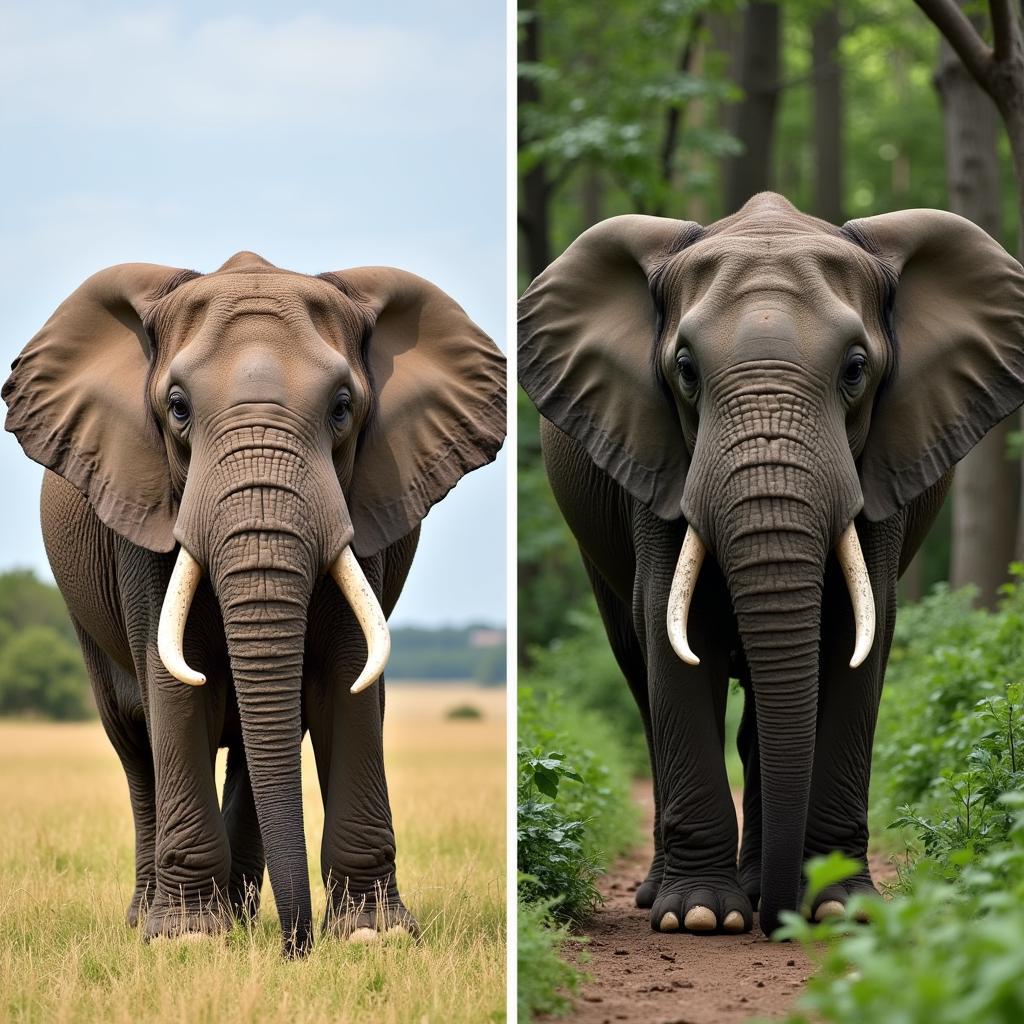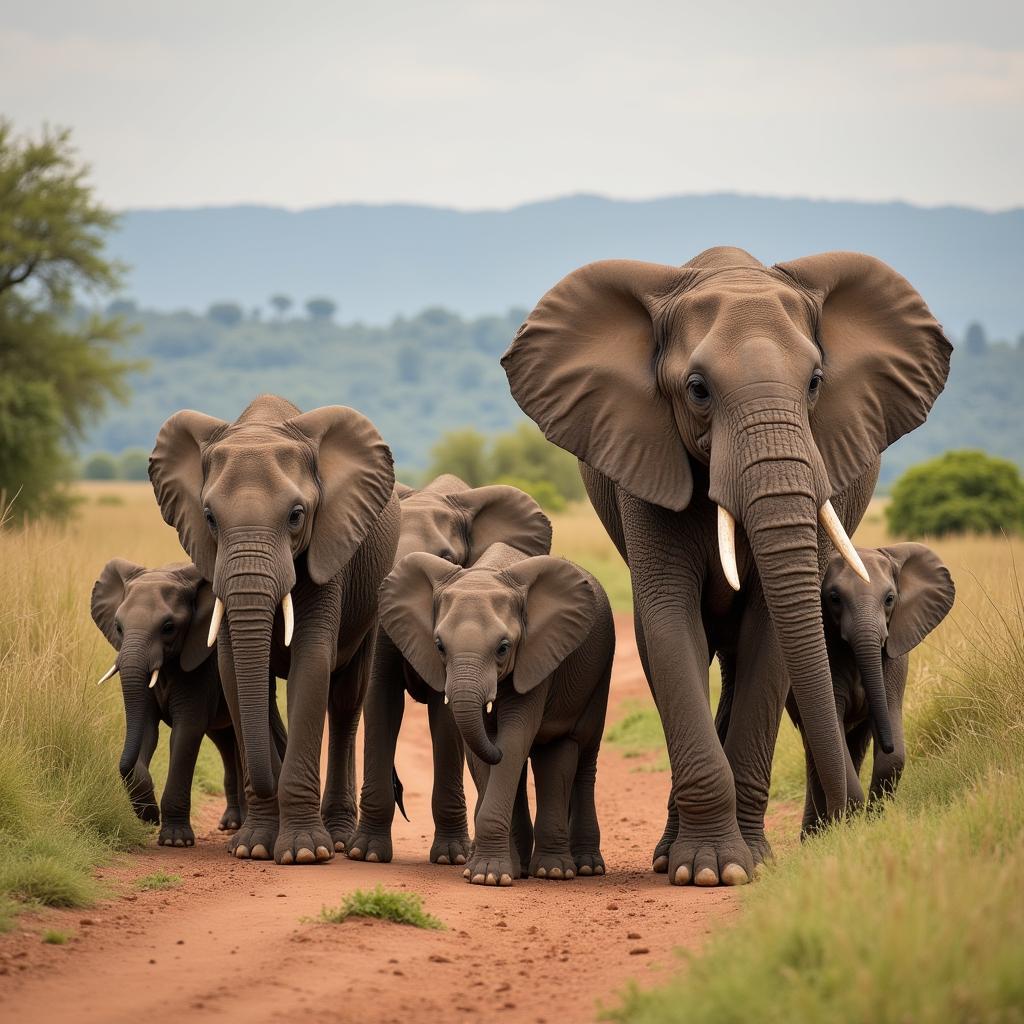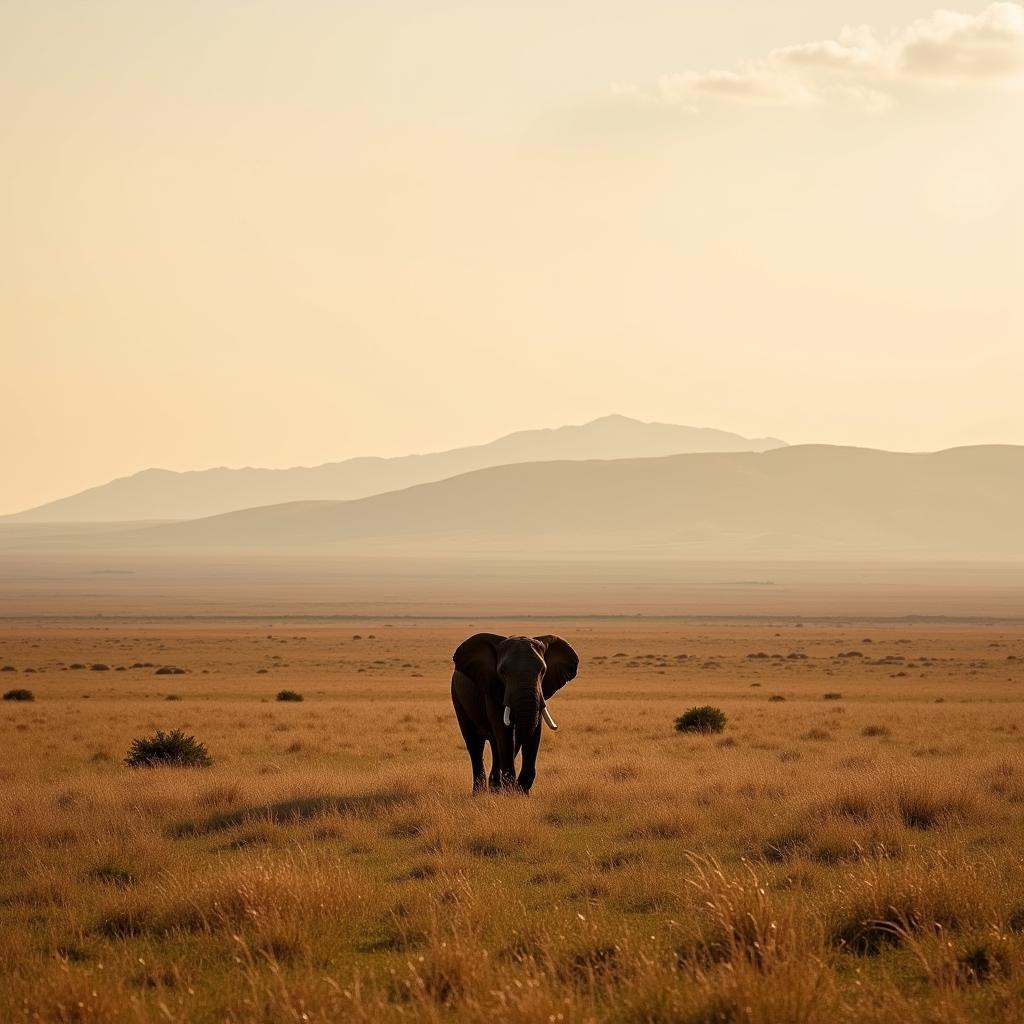African Elephant Genus and Species: A Comprehensive Guide
African elephants, majestic giants of the savanna, are instantly recognizable. But beneath their familiar exterior lies a complex taxonomic classification. This article delves into the fascinating world of the African Elephant Genus And Species, exploring their evolutionary history, physical characteristics, and the ongoing conservation efforts to protect these magnificent creatures.
The African elephant belongs to the family Elephantidae and the order Proboscidea, sharing ancestry with extinct mammoths and mastodons. However, within the living elephant family, distinctions arise, leading to the identification of separate species within the African elephant group. For further details on the order of African elephants, check out this african elephant order.
Understanding the African Elephant Genus Loxodonta
The genus Loxodonta specifically designates African elephants, separating them from their Asian counterparts (Elephas maximus). Loxodonta means “oblique-sided tooth,” referring to the distinctive shape of their molars. These unique molars, larger and more diamond-shaped than those of Asian elephants, are an adaptation to their diet of tough grasses and browse.
Two Distinct Species: The Savanna and Forest Elephants
Until relatively recently, African elephants were considered a single species, Loxodonta africana. However, scientific research based on genetic analysis, morphology, and behavioral differences has led to the recognition of two distinct species:
-
Savanna Elephant (Loxodonta africana): The larger of the two, the savanna elephant roams the open grasslands and woodlands of sub-Saharan Africa. Their large, fan-shaped ears help dissipate heat, and they have a concave back.
-
Forest Elephant (Loxodonta cyclotis): Smaller and more compact, forest elephants inhabit the dense rainforests of Central and West Africa. Their ears are smaller and more rounded, and their tusks are straighter and point downwards, an adaptation for navigating dense vegetation. For more insights into the taxonomy of African elephants, see african elephant taxonomy.
 African Elephant Species Comparison
African Elephant Species Comparison
Threats and Conservation Efforts
Both African elephant species face significant threats. Poaching for ivory remains a major problem, driving down populations and disrupting social structures. Habitat loss due to expanding human settlements and agriculture further restricts their range. Want to know more about the shrubs they eat in the grasslands? Here’s an article about african grassland shrubs.
Dr. Anika Mosi, a renowned conservation biologist specializing in African elephants, emphasizes the urgency of the situation: “Protecting these intelligent and socially complex creatures requires a multi-faceted approach. We need stronger anti-poaching measures, sustainable land management practices, and increased public awareness about the importance of elephant conservation.”
Conservation efforts focus on anti-poaching patrols, community-based conservation initiatives, and creating protected areas. These strategies, combined with international collaboration and public education, are crucial for the long-term survival of both African elephant species.
 African Elephant Family Unit
African Elephant Family Unit
The African Elephant’s Place in the Animal Kingdom
Understanding the African elephant genus and species requires placing them within the broader context of the animal kingdom. They belong to the kingdom Animalia, further classified under the phylum Chordata and class Mammalia. Dive deeper into their kingdom classification with this resource: african elephant kingdom classification. The unique characteristics of elephants, including their intelligence, complex social structures, and essential ecological roles, make them keystone species in their respective ecosystems. Dr. Jabari Olufemi, a leading expert in African elephant behavior, notes, “Elephants are ecosystem engineers, shaping their environment and influencing the distribution of other species. Their presence is vital for maintaining biodiversity.”
Have you ever noticed how an african elephant ears look like africa? Their unique shape is truly remarkable.
 African Elephant in its Savanna Habitat
African Elephant in its Savanna Habitat
Conclusion
The African elephant genus and species represent a remarkable example of adaptation and evolution. Recognizing the distinct species of savanna and forest elephants is critical for tailored conservation efforts. Protecting these iconic animals requires ongoing dedication to combating poaching, preserving habitat, and fostering a global appreciation for their crucial role in the intricate web of life.
FAQ
- What is the genus of the African elephant? Loxodonta
- How many species of African elephants are there? Two: savanna and forest elephants.
- What are the main threats to African elephants? Poaching and habitat loss.
- How can I help with African elephant conservation? Support reputable organizations working to protect elephants.
- What is the difference between African and Asian elephants? African elephants have larger ears, a concave back, and different tusk shapes.
- What is the social structure of African elephants? Matriarchal, with female-led herds.
- What is the role of elephants in their ecosystem? They are keystone species, influencing plant diversity and habitat structure.
Scenarios
- Scenario 1: You’re researching the genetic differences between African elephant species. This article provides a starting point to delve deeper into the genetic studies that differentiate the two.
- Scenario 2: You’re planning a safari and want to know more about the elephants you might encounter. This article provides information about their physical characteristics, habitat, and behavior.
- Scenario 3: You’re interested in supporting elephant conservation. The information provided here can guide you towards reputable organizations involved in conservation efforts.
Further Exploration
You might be interested in learning more about:
- Elephant communication and social behavior
- The impact of climate change on elephant populations
- The history of ivory poaching and its effects
For any assistance or further questions, please contact us: Phone: +255768904061, Email: kaka.mag@gmail.com or visit us at Mbarali DC Mawindi, Kangaga, Tanzania. Our customer service team is available 24/7.

